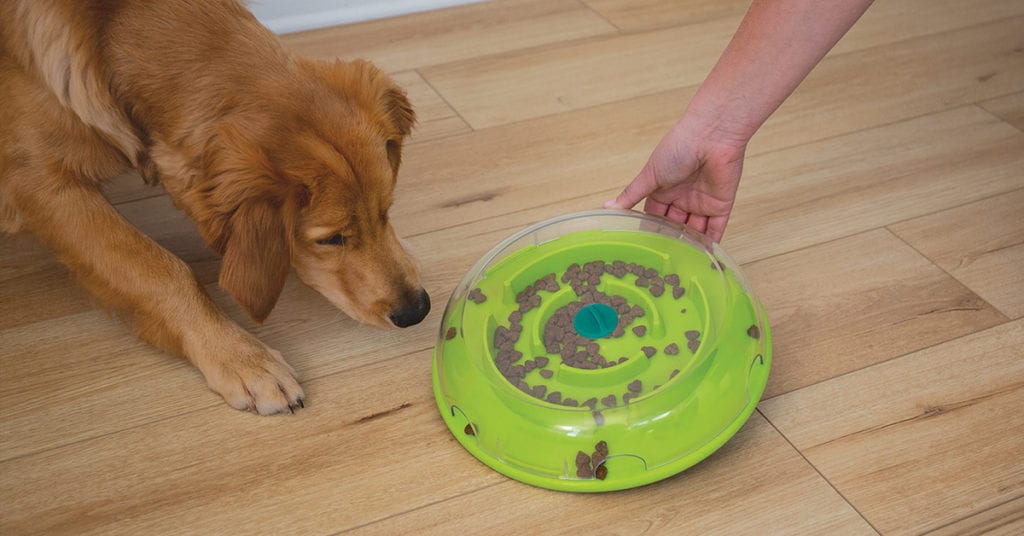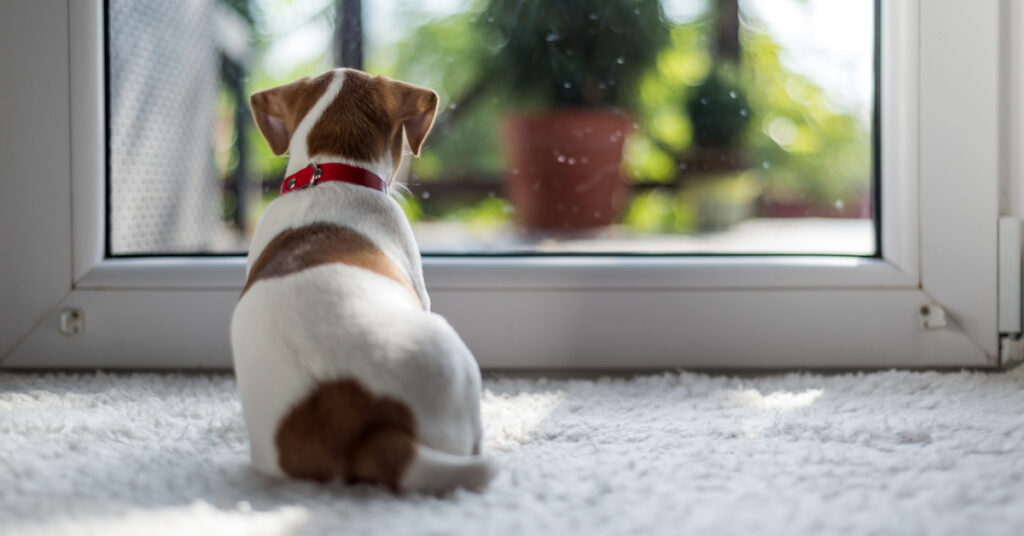Dog owners know their pup has some concept of time. How else do they know to appear at dinnertime every day?
Many dogs also know when their “person” is expected back home and perk up a little beforehand. They might do a slow stretch of their limbs reaching first the front right way out and then the back left as they rise from a nap. They saunter to the door or window to wait in anticipation of the imminent arrival of their favorite human.
So, do dogs have a sense of time? A 2018 study shows that yes, dogs (and other animals) do have a sense of time. They have what scientists call “timing cells.” These special cells help your pup gauge time during routine days.
However, this doesn’t mean your best friend can imagine distant future events like an upcoming move.
There are limits to your dog’s concept of time.
How Can Dogs Tell Time?

Your dog’s perception of time exists but it isn’t as precise as a human’s. That is to say, they don’t look at their watch and say, “It’s 6:30, time for a walk.”
But your furry friend does have an internal clock. That internal clock connects to their circadian rhythm so they grasp the time of day and know when to sleep and get up. It also starts ticking when he or she is waiting. Have you ever seen an impatient pooch? Those dramatic sighs or paws (and head) in your lap are clear cues that they’re waiting on you.
It turns out those “timing cells” are neurons in the part of your dog’s brain that’s called the medial entorhinal cortex. This part of the brain is responsible for navigation and memory. Scientists also think it could relate to your best friend’s concept of time.
The Science Behind It

Scientists from Northwestern University ran a series of experiments that included a lab test on a mouse in a virtual reality environment.
In the study, the (real) mouse ran on a (real) treadmill but in virtual reality. The mouse learned to run to a door, wait six seconds until it opened, and then continue on for a reward.
Next, the scientists made the door invisible. Yet, the mouse still knew exactly where to go and how long to wait. The breakthrough occurred when the scientists reviewed the mouse’s brain activity and realized that specific neurons – those “timing cells” – kicked in while the mouse waited on the door to open.
It’s a classic Pavlov response except instead of a bell it’s a door and a six-second wait.
Hence when your dog starts getting anxious about dinnertime or walkies because you’re late, those same neurons start firing and your dog might pace, whine, swish the tail or show other signs of impatience through their dog behavior.
And, you know dogs don’t understand the concept of five minutes.
What they understand are routines.
Episodic memory helps us (or our pets) remember past events. So when your dog leads the way on your typical walks, that’s episodic memory in action. So is knowing what time those walks usually occur and when it’s meal time.
Dogs do pick up on clues like if you always leave in the morning around the same time and stay gone for 8 or 9 hours, they get accustomed to such a schedule.
And thanks to those “waiting cells” they’ll grasp the amount of time it takes for you to come back. This is why if it stretches beyond the normal time, even the most well-adjusted dogs can start getting anxious.
Separation Anxiety

One common reason people call dog trainers is that their dog is miserable when home alone. Sometimes called separation anxiety, barking and destructive dog behavior are classic symptoms that the dog isn’t getting enough exercise or mental stimulation.
Anxiety in dogs also shows up in a higher than normal heart rate, pacing, panting, and sometimes peeing in excitement – (I know! I’m excited to see me too!)
In some cases, separation anxiety kicks in as soon as you leave. For others, it comes with the passing of time. The longer they’re left alone, the more likely your dog’s brain might start panicking.
However, plenty of dogs can be happy enough at home alone. In this study, dog behaviorists observed 123 dogs in 69 homes who were left home alone. They watched the dogs via video to see their body language, location, and actions.
Mostly these dogs spent their alone time relaxing in their favorite lounging spots. These dogs weren’t alone for more than four hours at a time and they seemed comfortable overall, though the male pooches hung around by the door more than the females. Maybe they’re looking for an outing?
Of course, if your pup’s perception of time is dramatic, they may think something like, “She went out for work what if she’s gone furrr-ever!” It’s not your dog’s fault she doesn’t have an understanding of time.
If this is the case, dog trainers recommend working with your dog on calming techniques. In addition to more playtime and exercise, you can practice going outside, waiting a minute or two, and then coming in. Try it for longer periods until your dog realizes you’re coming back.
Dogs can’t tell how long certain periods of time last.
How to Entertain Your Dog When You’re Away

Dogs, like people, need mental stimulation and exercise. Some need a LOT of both.
Think working breeds like Huskies and Border Collies. Such dogs are working dogs and without any work, they get bored fast. Cooped up indoors all day is a recipe for boredom and feeling the slooow passage of time.
This is why dog trainers often say, there are no “bad dogs” just a lack of communication with their pet owners.
Exercise, mental stimulation, and a sense of purpose are important. Even low-energy companion breeds like Maltese still need exercise and attention.
You can put on special music or Animal TV for your dog when you’re gone. Some dogs seem to enjoy those distractions.
But if you get stuck in traffic and you’re late coming home, your dog will know. Those “timing cells” will kick in and every second will feel like an eternity. Not that your dog has a reference point for eternity. But they will sense the passing of time and they always know when it’s mealtime.
So if you thought your dog could tell time, you’re right – in a way. They do have a sense of time, it’s just not as sophisticated as a human’s.

